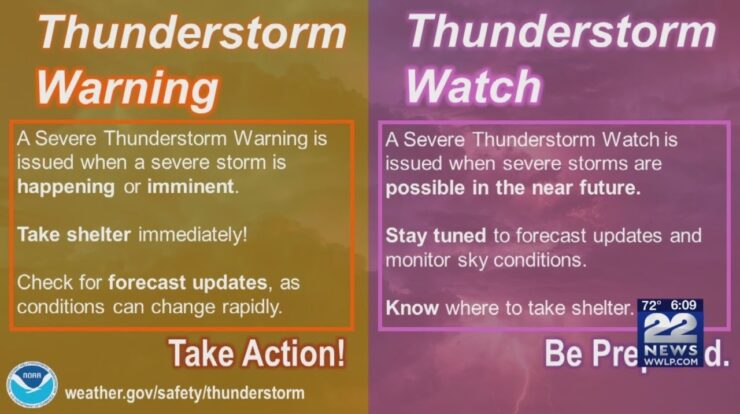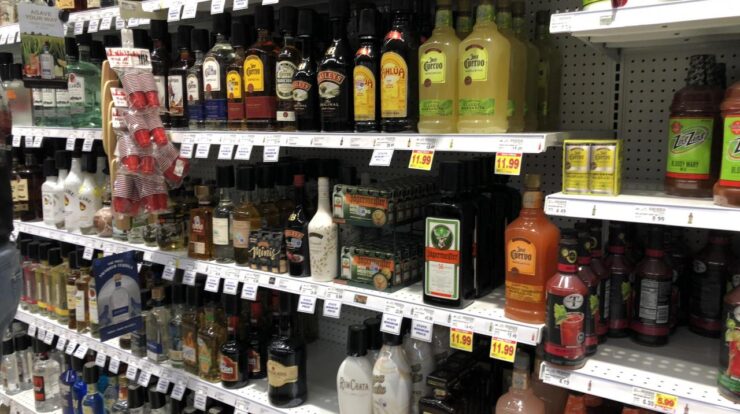
In the realm of weather forecasting, the terms “watch” and “warning” hold immense significance, often determining the course of action we take when faced with impending weather hazards. Is a watch or warning worse? Understanding the severity of weather alerts is crucial for safeguarding our lives and property.
Watches indicate the possibility of a hazardous weather event occurring within a specified area, while warnings signal its imminent arrival or actual occurrence. Recognizing the nuances between these alerts empowers us to make informed decisions and take appropriate precautions.
Severity of Warnings and Watches
Warnings and watches are two types of alerts issued by weather forecasters to indicate the potential for hazardous weather conditions. Warnings are the more severe of the two, indicating that hazardous weather is either imminent or already occurring. Watches, on the other hand, are issued when conditions are favorable for hazardous weather to develop.
Watches
- Issued when conditions are favorable for hazardous weather to develop.
- Provide advance notice, allowing individuals and communities to take precautions.
- Examples: Tornado watch, flood watch, hurricane watch
Warnings
- Issued when hazardous weather is imminent or already occurring.
- Indicate that immediate action is required to protect life and property.
- Examples: Tornado warning, flood warning, hurricane warning
Impacts of Warnings and Watches: Is A Watch Or Warning Worse
Warnings and watches can have significant impacts on individuals and communities.
Watches
- Provide time for individuals and communities to prepare for potential hazardous weather.
- Allow for the implementation of safety measures, such as evacuation or securing loose objects.
Warnings
- Alert individuals and communities to take immediate action to protect life and property.
- Can trigger emergency response plans and the mobilization of resources.
It is crucial to take both watches and warnings seriously and follow the recommended safety guidelines to minimize the potential impacts of hazardous weather.
Issuance and Distribution of Warnings and Watches
Warnings and watches are issued by authorized weather forecasters, such as the National Weather Service (NWS) in the United States.
Issuance
- Based on weather data, forecasts, and computer models.
- Forecasters consider factors such as atmospheric conditions, radar data, and satellite imagery.
Distribution
- Disseminated through various channels, including television, radio, mobile apps, and social media.
- Weather sirens and public address systems may also be used in certain areas.
Timely and accurate distribution of warnings and watches is essential for public safety.
Communication and Public Response

Effective communication is crucial for the public to understand and respond appropriately to warnings and watches.
Communication Strategies
- Clear and concise messaging using plain language.
- Repetition and redundancy to ensure message reaches intended audience.
- Use of multiple communication channels to maximize reach.
Public Response
- Take warnings and watches seriously and follow recommended safety guidelines.
- Stay informed about weather conditions and potential hazards.
- Develop emergency plans and practice response procedures.
Public cooperation and timely response are essential for minimizing the impacts of hazardous weather.
Technological Advancements in Warning Systems
Advancements in technology have significantly improved the accuracy and efficiency of warning systems.
Accuracy Improvements
- Advanced computer models and data analysis techniques.
- Improved radar and satellite technology for real-time weather monitoring.
Efficiency Enhancements
- Automated warning systems for faster and more accurate issuance.
- Improved communication networks for rapid distribution of warnings.
These advancements have contributed to more timely and effective warnings, leading to improved public safety.
Case Studies and Historical Examples
Case studies and historical examples provide valuable insights into the effectiveness of warnings and watches.
Case Studies
- Analysis of successful warnings that resulted in timely public response and reduced damage.
- Evaluation of warning failures and lessons learned to improve future systems.
Historical Examples
- Hurricane Katrina (2005): Case study of a devastating hurricane where warnings were issued but not adequately heeded.
- Tohoku Earthquake and Tsunami (2011): Example of an effective warning system that saved countless lives.
These case studies and examples inform policy decisions and contribute to the continuous improvement of warning systems.
Public Education and Preparedness
Public education is essential for promoting awareness and preparedness for watches and warnings.
Awareness Campaigns
- Educational programs to inform the public about different types of hazards and warning systems.
- Public service announcements and social media campaigns to reinforce key safety messages.
Preparedness Strategies
- Encouraging the development of emergency plans and evacuation routes.
- Promoting the stockpiling of essential supplies and resources.
Public education and preparedness empower individuals and communities to respond effectively to hazardous weather events.
International Collaboration and Cooperation
International collaboration is vital for sharing warning information and improving global preparedness.
Information Sharing
- Exchange of weather data and forecasts between countries.
- Development of standardized warning systems for cross-border hazards.
Joint Initiatives
- Collaboration on research and development of new warning technologies.
- Establishment of regional warning centers for coordinated response to transboundary hazards.
International cooperation enhances the effectiveness of warning systems and promotes global safety.
Ethical and Legal Considerations
Ethical and legal considerations guide the issuance and distribution of warnings and watches.
Ethical Responsibilities
- Duty to provide timely and accurate warnings to protect public safety.
- Responsibility to avoid issuing false or misleading warnings.
Legal Considerations, Is a watch or warning worse
- Legal liability for negligence or failure to issue adequate warnings.
- Protections for forecasters and agencies involved in warning issuance.
Ethical and legal considerations ensure responsible and effective warning systems.
Closing Notes
Ultimately, whether a watch or warning is worse depends on the severity of the impending weather event and our preparedness to respond. By understanding the differences between these alerts, staying informed through reliable sources, and adhering to safety guidelines, we can mitigate the risks posed by hazardous weather and safeguard our well-being.
Key Questions Answered
What is the difference between a watch and a warning?
A watch indicates the possibility of a hazardous weather event occurring within a specified area, while a warning signals its imminent arrival or actual occurrence.
Why is it important to take both watches and warnings seriously?
Both watches and warnings provide valuable information about potential weather hazards. Taking them seriously allows us to make informed decisions and take appropriate precautions to protect ourselves and our property.
How can I stay informed about weather alerts?
There are several ways to stay informed about weather alerts, including local news channels, weather apps, and the National Weather Service website.





